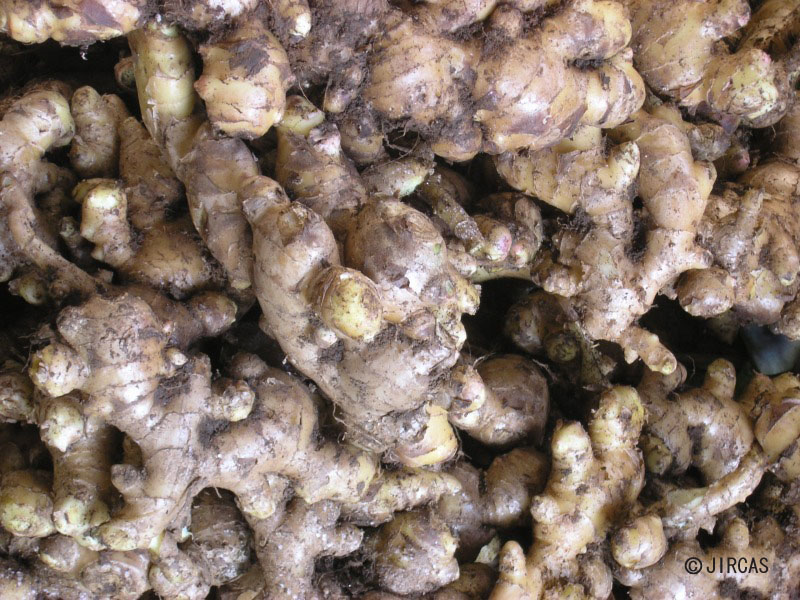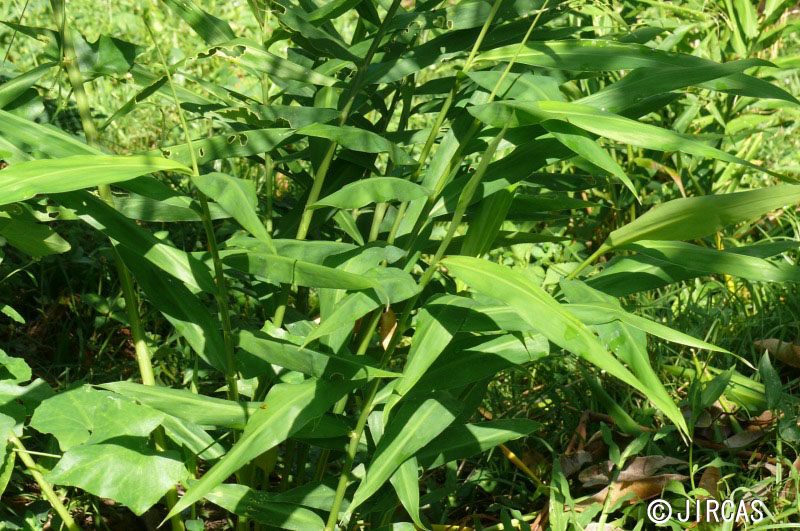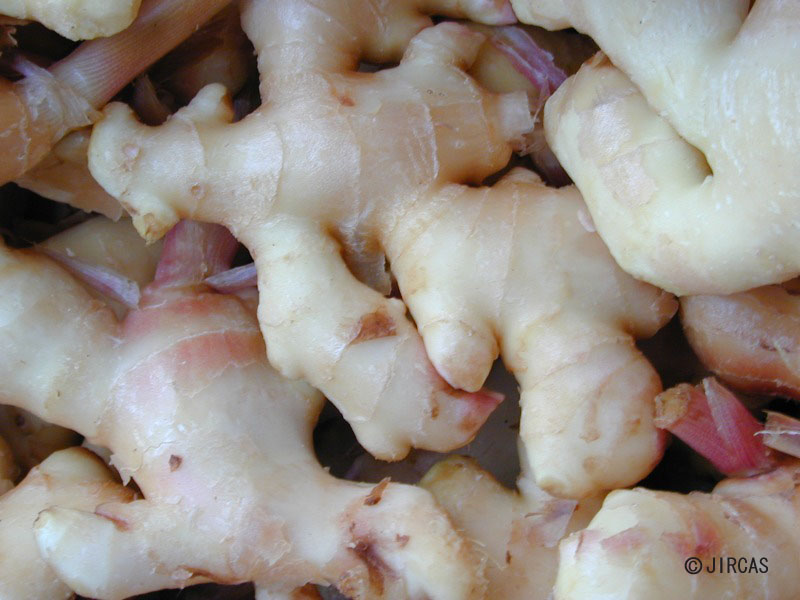Zingiber officinale Roscoe (Zingiberaceae)
- Scientific name
- Zingiber officinale Roscoe
- Family name
- Zingiberaceae
- Common name
- Ginger (English); shoga (Japanease)
- Local name
- Khing, khing-daeng
Erect slender perennial herb, usually grown as an annual. Rhizome thickened, fleshy, subterranean. Stems aerial. leafy, up to 1.25 m tall. Leaves distichous; sheath prominently veined, ligule bilobed, glabrous to sparsely pilose, blade linear to lanceolate, up to 30 × 2 cm, acuminate at apex. Inflorescence spiciform, arising directly from rhizome, 15–30 cm long. Flowers fragile, short-lived, surrounded by a spatha-like bracteole. Fruit a thin-walled capsule, 3-valved, red. Seeds small, arillate, black.
Cultivated in the tropics in sunny areas with medium loamy soil (pH 6.0–7.0) at elevations from sea level to 1,500 m a.s.l. Propagated by rhizome division; each section (50–100 g, 3–5 buds) is planted at a spacing of 15–20 cm between plants and 50–75 cm between rows. Dry ginger rhizome contains 10 g water, 10–20 g protein, 10 g fat, 40–60 g carbohydrates, 2–10 g fibre, and 6 g ash per 100-g serving.Older rhizomes are harvested during the dry season, and young rhizomes are harvested 4–6 months after planting.
Young rhizomes are eaten raw, pickled, or in various dishes such as moo phat khing (stir-fried pork with ginger).
Young rhizomes are eaten raw, pickled, or in various dishes such as moo phat khing (stir-fried pork with ginger).






